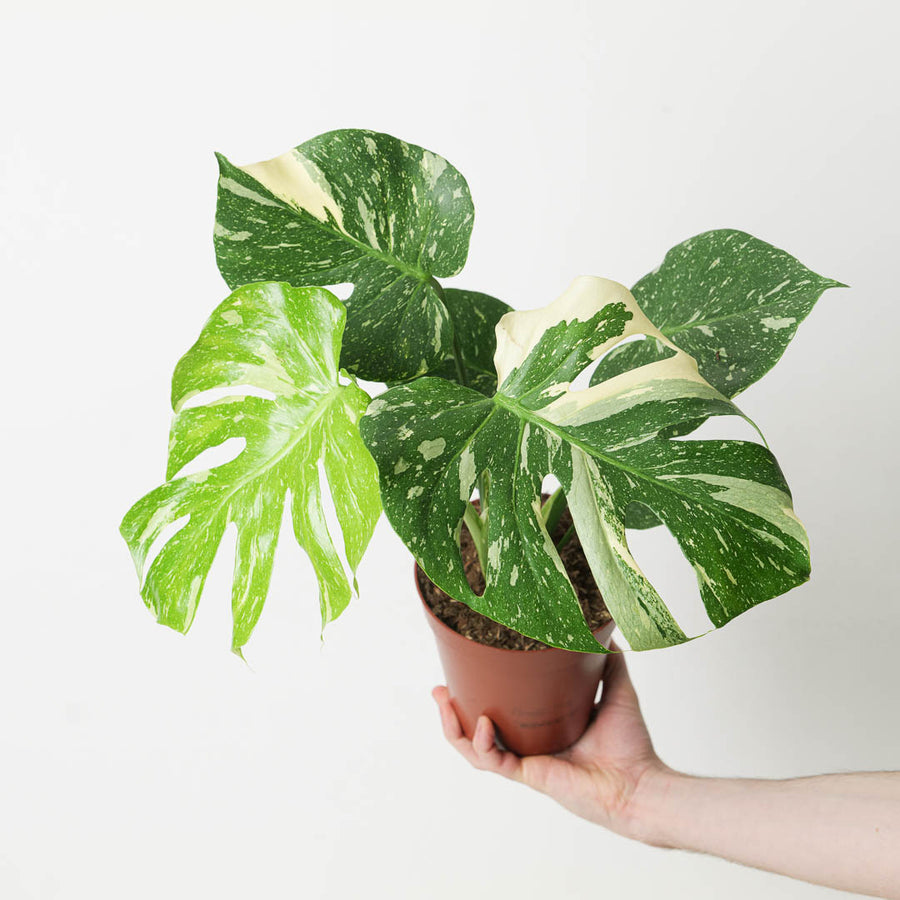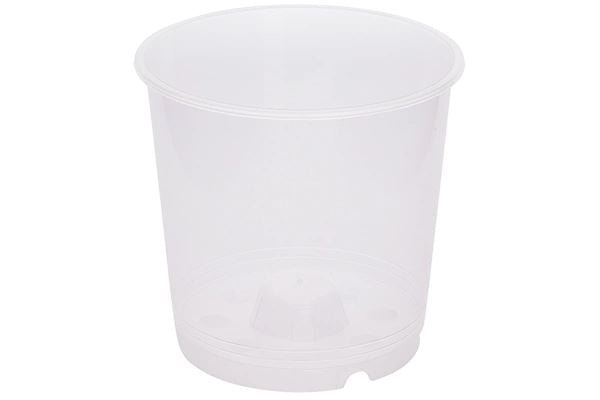Tradescantia
Tradescantia, also known as inch plant or spiderwort, is a great low-maintainance houseplant for any living or office space. Native to the tropical and subtropical regions of South America, Tradescantia thrives in warm, humid environments where its vibrant foliage flourishes. Its adaptability, rapid growth, and stunning variety of colours make it a real favourite among both beginner and experienced plant collectors.
In this blog, we will explain everything you need to know about caring for Tradescantia, including expert tips on lighting, watering, and repotting.
What Lighting Do Tradescantia Prefer?
Tradescantia prefers bright, indirect light, similar to the soft and diffused sunlight it would get in its native habitats across South America. Too much direct sun can scorch the leaves, while low light can lead to dull colours and slower growth. A spot near a east facing window with filtered light is ideal.
How Often Should I Water My Tradescantia?
Water when the top 3cm of soil feels dry to the touch, or the leaves feel droopy. Keep the soil moist but not soggy to prevent root rot as tradescantia roots are quite fine. With their full and bushy growth, many Tradescantia owners opt for bottom watering.
When watering, use lukewarm water (room temperature) to avoid shocking the roots. Make sure that the pot has proper drainage to avoid water sitting at the bottom and opt for rain water where possible.
When Should I Repot My Tradescantia?
Repot when your Tradescantia outgrows its current container or the soil becomes compacted. As Tradescantia are fast growers, this could be once every year. Choose a pot 1-2 inches larger than the current one, and replace the soil with fresh, well-draining mix like our Simply Houseplant Mix.

How to Propagate My Tradescantia
Propagating Tradescantia is simple! Just snip a healthy section with a few leaves, and place it in water or damp moss. Roots will develop quickly, and once they are 3cm long, transfer them into soil and a new plant will grow in no time. For a bushier plant,
Is Tradescantia Pet Friendly?
No, Tradescantia is not considered pet-safe. While it is not highly toxic, the sap in the leaves and stems can cause mild to moderate irritation if ingested by pets. Cats and dogs that chew on Tradescantia may experience gastrointestinal discomfort, such as vomiting or diarrhoea, and skin irritation if they come into contact with the sap.
How to Protect Your Pets:
- Place the plant out of reach: Keep Tradescantia on high shelves, in hanging planters, or in rooms where pets can’t easily access them.
- Monitor curious pets: If your cat or dog tends to nibble on plants, consider using deterrent sprays or providing pet-safe plants as an alternative.
- Watch for symptoms: If your pet ingests Tradescantia, monitor them for any signs of irritation or illness. Contact your vet if symptoms persist.
Common Issues When Growing Tradescantia
Even though Tradescantia is a low-maintenance and resilient plant, it can encounter a few common issues. Identifying and addressing these problems early will help keep your plant looking vibrant and healthy.
Yellowing Leaves
If you notice the leaves of your Tradescantia turning yellow, this is often a sign of overwatering or poor drainage. When the roots sit in soggy soil for too long, they become waterlogged, leading to root rot and yellowing foliage.
How to Fix It:
- Check the soil: If the top 3 cm of soil is still damp, hold off on watering until it dries out.
- Improve drainage: Make sure your pot has adequate drainage holes to allow excess water to escape. Consider adding perlite or coarse sand to the potting mix to improve aeration.
- Trim damaged roots: If root rot has set in, trim off any black, mushy roots and repot the plant in fresh, well-draining soil.
Pro Tip: If you consistently notice yellow leaves at the bottom of the plant, this could be part of the plant’s natural growth cycle as older leaves shed. Simply prune these leaves to encourage new growth.
2. Leggy Growth (Stretching and Sparse Foliage)
Leggy growth occurs when your Tradescantia isn’t receiving enough light. The stems stretch out in search of sunlight, resulting in sparse, elongated growth with fewer leaves. This leads to a less bushy and vibrant appearance.
How to Fix It:
- Move it to a brighter spot: Place your Tradescantia where it receives bright, indirect light for at least 4-6 hours a day. A spot near a window with filtered light is ideal.
- Rotate the plant: To ensure even growth, rotate your plant regularly so all sides receive equal light exposure.
- Pinch or prune: To encourage bushier growth, pinch back the tips of the stems. This promotes branching and creates a fuller, more compact plant.
Pro Tip: If you’re growing Tradescantia in lower light conditions, consider supplementing with a grow light to prevent legginess.
Root Rot
Root rot is a serious issue that occurs when Tradescantia’s roots remain in waterlogged soil for too long. It can cause the plant to wilt, even if the soil is moist. Over time, the leaves may turn yellow, and the roots will become black and mushy.
How to Fix It:
- Remove the plant from the pot
- Trim infected roots & sterilise with hydrogen peroxide
- Repot in fresh soil
Pro Tip: After repotting, reduce watering and allow the soil to dry out between watering sessions to prevent recurrence.
Brown Leaf Tips
Brown tips on the leaves can be caused by low humidity, fluoride in tap water, or inconsistent watering. Tradescantia prefers a slightly humid environment, and prolonged exposure to dry air can cause leaf tips to brown.
How to Fix It:
- Increase humidity
- Use filtered or distilled water
- Maintain consistent watering
Pests
Pests can sometimes infest Tradescantia, especially if the plant is kept in warm, dry conditions. Common culprits include spider mites, aphids, and mealybugs, which suck sap from the plant, causing weakened growth and yellowing leaves.
How to Fix It:
- Isolate the plant
- Wipe the leaves
- Apply insecticidal soap
Pro Tip: Regularly inspect your Tradescantia for signs of pests, especially if it’s been outdoors during warmer months.
Loss of Vibrancy
If your Tradescantia’s vibrant foliage starts to fade or lose its striking color, this is usually due to insufficient light. Bright light enhances the vivid purples, pinks, and greens that make Tradescantia varieties so appealing.
How to Fix It:
- Increase light exposure: Move the plant to a location with brighter, indirect light.
- Avoid direct sunlight: While Tradescantia loves bright light, too much direct sunlight can bleach its colours. Filter the light with sheer curtains if necessary.
Trending at GrowTropicals:

Tradescantia pallida 'Purple Heart' from £9.99

Tradescantia Zebrina - From £8.99

Tradescantia Nanouk - From £6.99
Need More Help with Your Tradescantia & Houseplants?
Caring for plants can be a rewarding experience, adding beauty and elegance to your home. If you have specific questions or need personalised advice, feel free to reach out to us at hello@growtropicals.com. Our plant experts are here to help you keep your Tradescantia thriving.
Explore our full collection of Tradescantia and plant care products to find everything you need for a flourishing indoor jungle.





